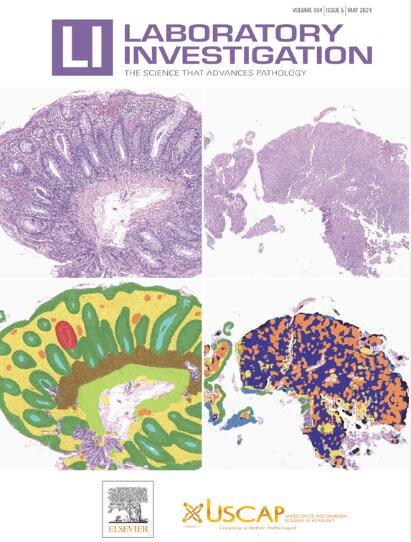Automated Scoring to Assess RAD51-Mediated Homologous Recombination in Ovarian Patient-Derived Tumor Organoids
IF 5.1
2区 医学
Q1 MEDICINE, RESEARCH & EXPERIMENTAL
引用次数: 0
Abstract
Poly(ADP-ribose) polymerase inhibitors (PARPi) have been shown to improve progression-free survival, particularly in homologous recombination-deficient ovarian cancers. Identifying patients eligible for PARPi is currently based on next-generation sequencing, but the persistence of genomic scars in tumors after restoration of homologous recombination (HR) or epigenetic changes can be a limitation. Functional assays could thus be used to improve this profiling and faithfully identify homologous recombination-deficient tumors. The repair capacity (RECAP) test assesses the formation of RAD51 foci in proliferating cells after irradiation and can be used on tumors as well as on patient-derived tumor organoids (PDTO). However, RAD51 foci scoring is often performed manually without standardization. The purpose of this translational study was to develop an automated tool for scoring RAD51-mediated HR based on whole slide imaging of ovarian PDTO. To that end, we quantified Cyclin A2 and RAD51 immunofluorescence on 9 PDTO models derived from 8 ovarian cancer patients, and next, we compared the RECAP test results to genome instability score and to the patient clinical response. We therefore developed a standardized and automatized quantitative histoimaging tool allowing a comparative RAD51 foci evaluation and thus to define the HR status in PDTO. Our RECAP-based classification was correlated to the genome instability score, offering a new opportunity for standardization of HR assessment in PDTO. This new automated tool to score HR status, which remains to be validated on a large cohort of patients, may thus be used as a complement to next-generation sequencing-based tests in order to improve the identification of the number of patients eligible for PARPi.
求助全文
约1分钟内获得全文
求助全文
来源期刊

Laboratory Investigation
医学-病理学
CiteScore
8.30
自引率
0.00%
发文量
125
审稿时长
2 months
期刊介绍:
Laboratory Investigation is an international journal owned by the United States and Canadian Academy of Pathology. Laboratory Investigation offers prompt publication of high-quality original research in all biomedical disciplines relating to the understanding of human disease and the application of new methods to the diagnosis of disease. Both human and experimental studies are welcome.
 求助内容:
求助内容: 应助结果提醒方式:
应助结果提醒方式:


